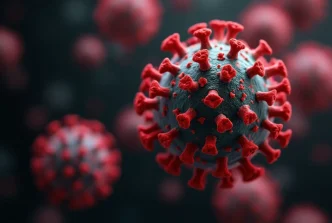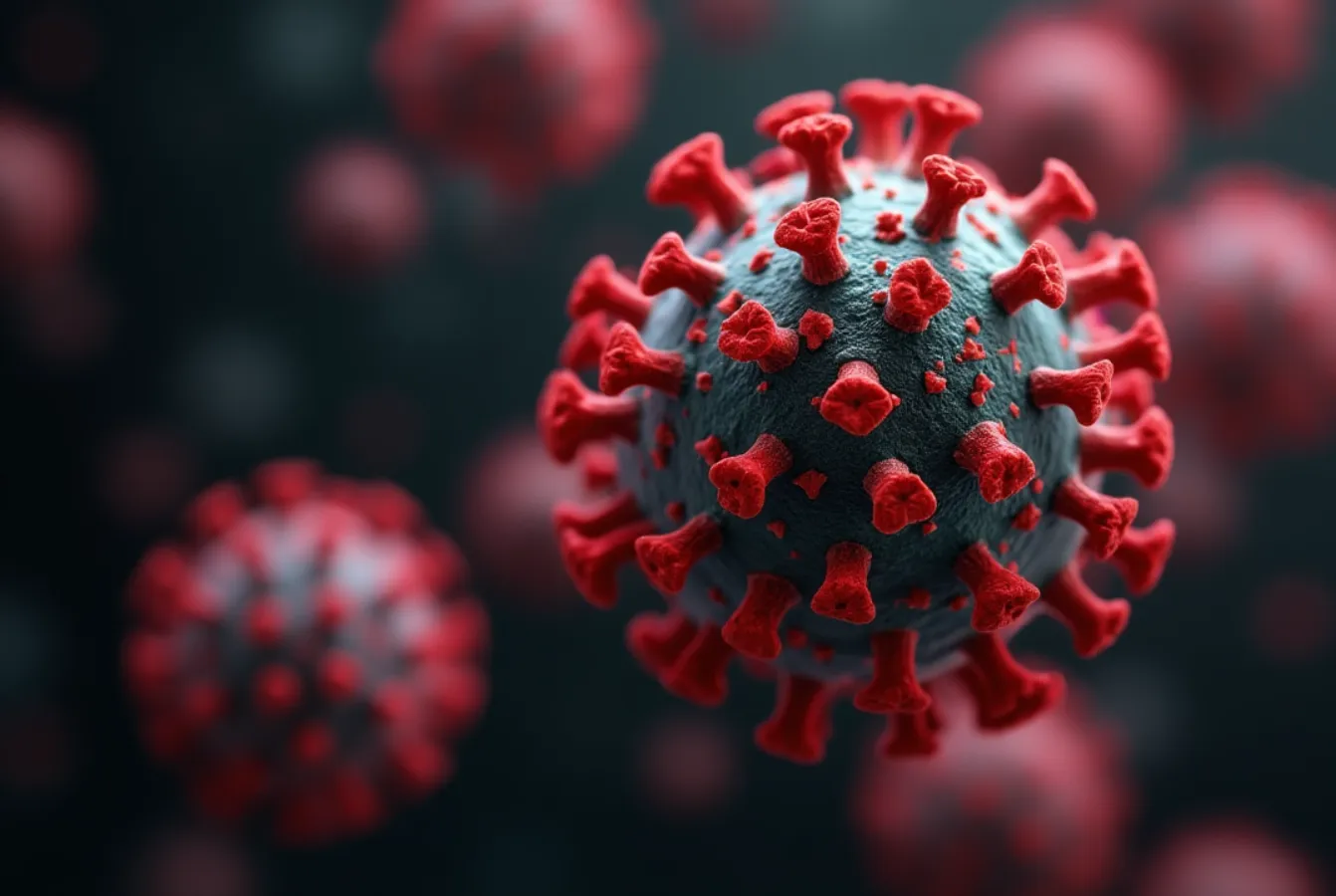As global vigilance against Covid-19 wanes, a troubling resurgence of the virus has emerged across Southeast Asia and beyond, with countries like Thailand, Malaysia, Indonesia, and Singapore reporting significant spikes in cases. The emergence of the NB.1.8.1 variant, classified as a Variant Under Monitoring (VUM) by the World Health Organization (WHO), has added a layer of uncertainty to the situation, prompting renewed calls for public caution and robust health measures.
Alarming Case Numbers Across the Region
In Thailand, health authorities reported a staggering 65,880 new Covid-19 cases between May 25 and 30, alongside three fatalities. This sharp increase reflects a broader trend across the region, where complacency among the public and waning immunity—whether from natural infection or vaccination—may be contributing to the surge. Malaysia, too, has seen a steady rise, with the Health Ministry recording an average of 600 cases per week between April 14 and May 10, totaling over 11,000 cases from January 1 to May 10. While these are the latest figures available, they underscore a persistent challenge for health systems still recovering from earlier waves of the pandemic.
Singapore reported over 14,000 cases in just one week, between April 27 and May 3, while Indonesia’s Health Ministry has issued public advisories urging vigilance as cases climb in several Asian nations. The uptick is not confined to Southeast Asia; Hong Kong and the United States have also noted increases linked to the NB.1.8.1 variant, signaling a potential global wave. In India, active cases have surpassed 4,000, with states like Gujarat overtaking Delhi in reported numbers as of early June 2025.
The NB.1.8.1 Variant: Transmissible but Not More Deadly
The NB.1.8.1 variant, identified as highly transmissible, has become a focal point of concern. According to the WHO, as of mid-May 2025, this variant accounted for 10.7% of global SARS-CoV-2 sequences, marking a shift from the declining circulation of the LP.8.1 strain earlier in the year. While NB.1.8.1 does not appear to cause more severe illness, higher hospitalization rates, or increased mortality, its ability to spread rapidly poses challenges for containment.
Prof Dr Sharifa Ezat Wan Puteh, a public health expert from Universiti Kebangsaan Malaysia, emphasized the importance of awareness around viral mutations. “The most recent designated variant under monitoring is NB.1.8.1, and it is considered highly transmissible but does not indicate higher virulence” she said. She noted that current vaccines still offer protection against this strain, urging high-risk groups—such as the elderly, young children, pregnant women, and those with comorbidities—to remain cautious.
Symptoms associated with NB.1.8.1 include fever, cough, sore throat, fatigue, headache, and gastrointestinal distress, often mimicking other respiratory illnesses like adenovirus, Respiratory Syncytial Virus (RSV), or influenza. Prof Sharifa advised that individuals experiencing such symptoms should test for Covid-19 and seek medical advice to rule out complications like pneumonia. “Besides antigen testing, you may need to get a chest X-ray and blood test for confirmation” she said.
Why Are Cases Rising Now?
Public health experts point to several factors behind the resurgence. Datuk Dr Zainal Ariffin Omar, a former Health Ministry official in Malaysia, highlighted diminishing immunity as a key driver. “The rise in cases could be due to decreasing immunity either from natural infection or immunization and people no longer observing precautionary measures like before” he said. Across the region, mask-wearing and social distancing have largely fallen out of practice as Covid-19 is increasingly perceived as a lesser threat compared to the height of the pandemic in 2020 and 2021.
Prof Sharifa echoed this sentiment, noting that societal laxity has allowed the virus to exploit gaps in vigilance. She urged high-risk individuals to wear masks outdoors or when symptomatic and to maintain medication schedules for non-communicable diseases (NCDs) to avoid compounding health risks. “If you have Covid-19-like symptoms, it could also be adenovirus, RSV, and/or influenza” she said, adding that co-infections, though rare, are possible.
The WHO’s latest data, released on May 28, 2025, paints a broader picture of the global situation. Since February, SARS-CoV-2 activity has risen, with test positivity rates reaching 11%—a level not seen since July 2024. The increase is particularly pronounced in the Eastern Mediterranean, Southeast Asia, and Western Pacific regions. However, the organization cautions that surveillance remains limited, and the virus still lacks a clear seasonal pattern, complicating efforts to predict and manage future waves.
Health Systems on Alert
In response to the surge, governments across Southeast Asia are ramping up efforts to contain the spread. Indonesia’s Health Ministry has called on citizens to adopt precautionary measures, though specific guidelines vary by province. In Malaysia, officials are closely monitoring the situation, with the Health Ministry emphasizing the need for updated data to guide policy. Singapore, known for its robust public health infrastructure, continues to track cases meticulously, providing a model for transparency in reporting.
In India, scenes of doctors inspecting isolation wards—such as at a government hospital in Secunderabad, Telangana, on May 24, 2025—serve as a stark reminder of the virus’s persistence. While health facilities in many countries are better prepared than in earlier waves, the strain on resources remains a concern, particularly for rural and underfunded regions. The WHO has advised member states to adopt a risk-based, integrated approach to managing Covid-19, balancing public health measures with the need to avoid widespread disruption.
Public Perception and Behavioral Challenges
One of the greatest hurdles facing health authorities is shifting public perception. After years of pandemic fatigue, many people have relegated Covid-19 to the background, treating it as an endemic rather than an active threat. Social gatherings, travel, and relaxed workplace policies have contributed to increased transmission opportunities, especially as new variants like NB.1.8.1 exploit these conditions.
In Malaysia, for instance, the MySejahtera app—once a cornerstone of contact tracing and health status monitoring—has fallen out of mandatory use, with Prof Sharifa noting that follow-ups through the app are no longer required for most cases. This shift reflects a broader trend of normalization, even as case numbers climb. Across social media platforms like X, sentiment in the region varies, with some users expressing frustration over renewed restrictions while others call for stricter enforcement of mask mandates in crowded areas.
Looking Ahead: Balancing Vigilance and Normalcy
As Southeast Asia grapples with this latest wave of Covid-19, the challenge lies in striking a balance between vigilance and the desire for normalcy. Health experts stress that while the NB.1.8.1 variant may not pose a greater risk of severe illness, its transmissibility could still overwhelm health systems if left unchecked. Vaccination campaigns, particularly booster shots for vulnerable populations, remain a critical tool, alongside public education on recognizing symptoms and seeking timely care.
The WHO’s call for continued monitoring and risk-based strategies offers a roadmap, but implementation varies widely across countries with differing resources and political priorities. For now, the region watches closely, aware that the virus’s ability to mutate and resurge demands a sustained, collective response. As cases continue to rise, the question looms: will Southeast Asia—and the world—find the resolve to confront Covid-19 with the urgency it still demands?
















